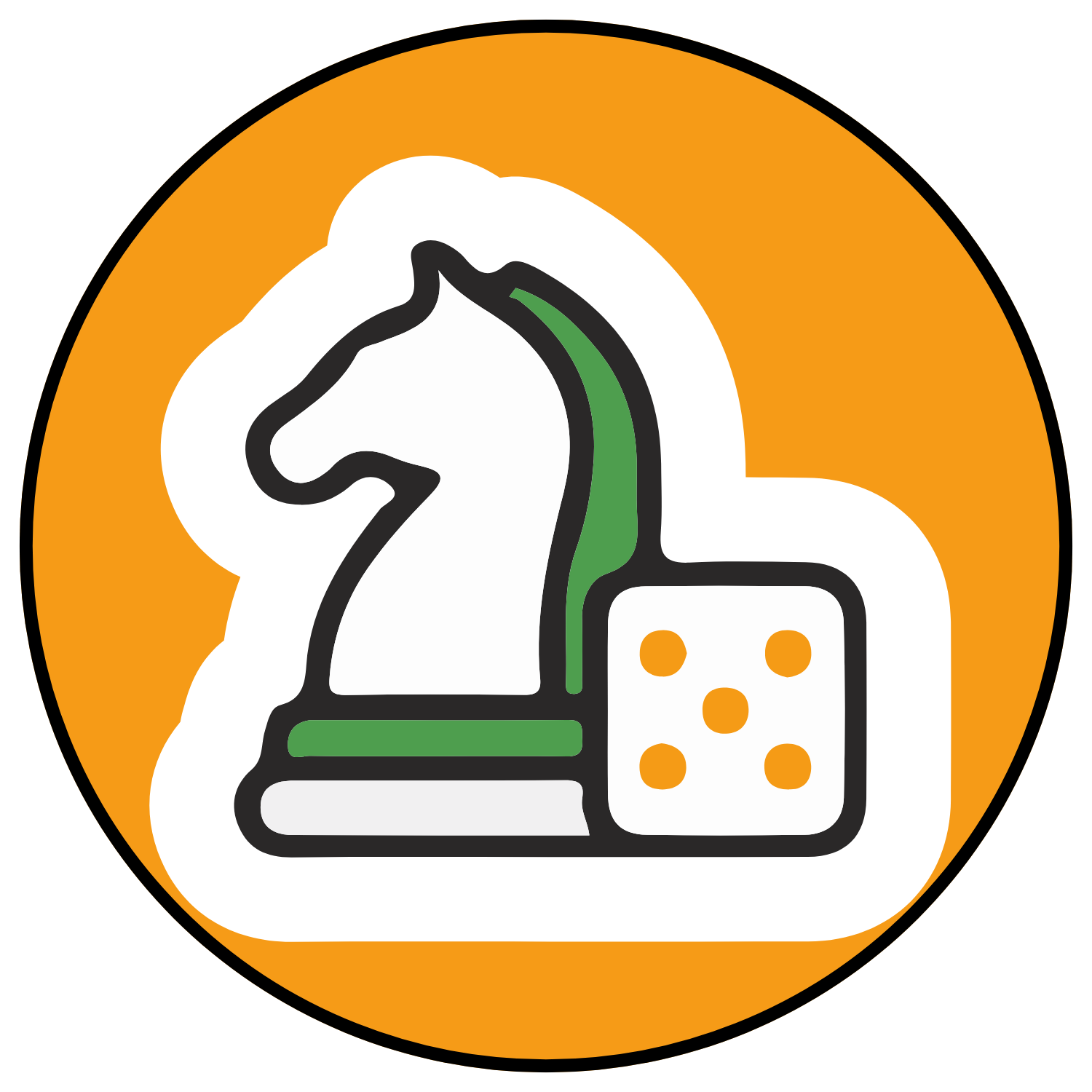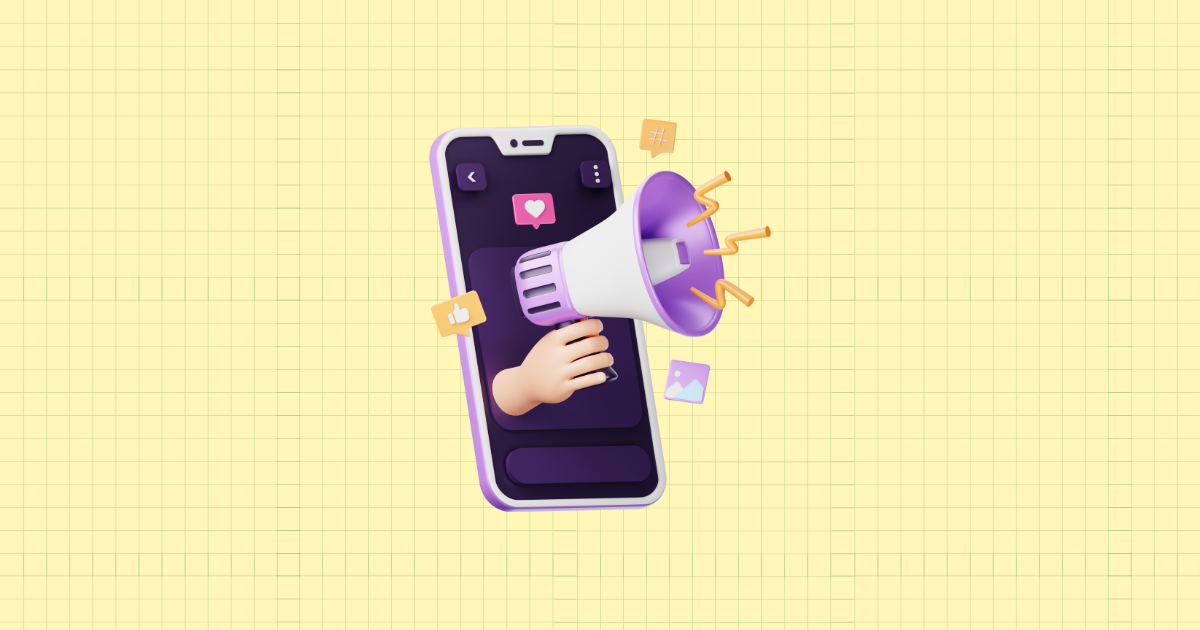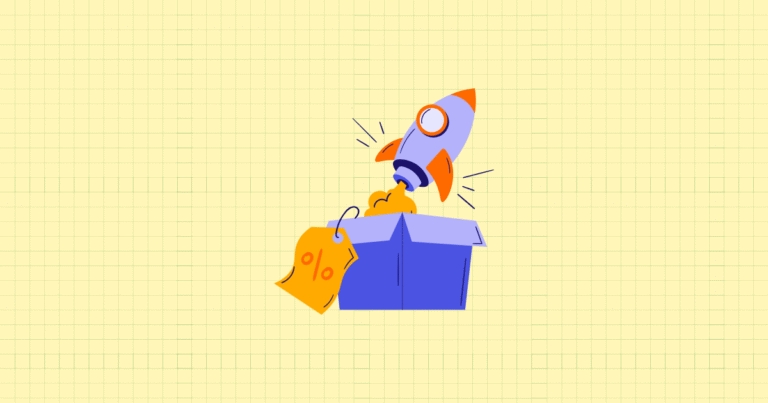Remember the days when a simple Facebook post was just for sharing vacation photos? Those days are gone. Social media has transformed into the most powerful sales engine for e-commerce businesses, with platforms now functioning as virtual shopping malls where consumers browse, discover, and purchase without ever leaving their feeds. For Shopify store owners, this shift represents both an enormous opportunity and a critical challenge.
If you’re still treating social media as just another marketing channel, you’re missing the bigger picture. A staggering 54% of Gen Z and 58% of millennials now use social platforms as their primary method for discovering new products. Compare that to traditional TV advertising, which influences only 13% of consumer product discoveries, and the shift becomes undeniable.
The influencer marketing industry has exploded to $24 billion and continues to grow rapidly. Why? Because in a world of endless options and dwindling attention spans, consumers crave authentic guidance from voices they trust.
Unique Benefits for Shopify Merchants
As a Shopify store owner, you have distinct advantages in this social commerce revolution. The platform’s extensive integration capabilities allow you to transform casual scrollers into customers with fewer clicks than ever before. But the benefits extend far beyond mere convenience:
- Increased brand visibility and customer acquisition – Reach audiences who might never find you through traditional search
- Enhanced trust through third-party validation – Leverage social proof to overcome the inherent skepticism of online shopping
- Access to engaged, targeted audiences – Connect with communities already interested in your product category
These aren’t just theoretical advantages. The numbers tell the story: 73% of US merchants cite social media engagement as their top customer relationship strategy, while 52% identify organic social media as their most effective marketing channel. Not surprising when you consider that social platforms combine discovery, consideration, and purchase into a seamless experience.
The Competitive Advantage of Social Integration
What separates thriving Shopify stores from struggling ones? Often, it’s their approach to social integration. Top-performing stores aren’t just posting product photos – they’re creating omnichannel shopping experiences that meet customers wherever they are.
This integration also builds stronger customer relationships. When a customer follows your brand on Instagram, engages with your TikTok content, and eventually purchases through an integrated checkout, they’re not just making a transaction – they’re joining your community. This community then generates valuable user-generated content, creating a virtuous cycle of engagement and sales.
With 41% of US merchants considering influencer marketing the most impactful marketing trend, the question isn’t whether to incorporate social and influencer strategies, but how to do it effectively. Let’s dive into the specifics.
Understanding the Social Media Landscape for Shopify Stores
Not all social platforms are created equal when it comes to e-commerce potential. Each offers unique features, audience demographics, and shopping behaviors that can dramatically impact your results. Understanding these distinctions is crucial for maximizing your return on investment.

Key Social Platforms for Shopify Integration
Instagram has evolved from a photo-sharing app to an e-commerce powerhouse. Its seamless Shopify integration allows you to transform your feed into a shoppable catalog with features like:
- Shopping tags and product catalogs – Tag products directly in posts and stories, allowing users to tap and purchase
- Instagram Stories and Reels – Create immersive product showcases with swipe-up links to product pages
- Direct integration with Shopify product feeds – Automatically sync your store inventory with Instagram
The visual nature of Instagram makes it particularly effective for fashion, beauty, home goods, and lifestyle products. But don’t dismiss it for other categories – creative presentation can make even mundane products shine.
TikTok
TikTok’s explosive growth has made it impossible to ignore, especially with its expanding commerce features. The platform’s algorithm excels at connecting content with interested viewers, often resulting in viral product moments that can generate thousands of orders overnight.
Key TikTok opportunities include:
- TikTok Shop – An increasingly important feature allowing in-app purchases
- Short-form video marketing – Perfect for demonstrating products in action
- Shopify-TikTok integration – Connect your product catalog directly to TikTok
The platform’s younger demographic and emphasis on authenticity make it ideal for brands with personality and products that solve visible problems. One 15-second demo of your product in action can outperform weeks of traditional marketing.
Despite newer platforms stealing the spotlight, Facebook remains a cornerstone of social commerce, particularly for reaching older demographics. Its robust features include:
- Facebook Shops – Create customized storefronts within Facebook
- Marketplace selling – List products in local marketplaces
- Advanced targeting capabilities – Reach specific customer segments with precision
Facebook’s mature advertising ecosystem offers unparalleled targeting options based on interests, behaviors, and demographics. For many Shopify merchants, particularly those with higher-priced items and older target customers, Facebook continues to deliver the highest return on ad spend.
YouTube
Often overlooked in e-commerce strategies, YouTube offers powerful opportunities for Shopify merchants through:
- YouTube Shopping features – Tag products directly in videos
- Expanded Shopify partnership – Eligible merchants can sell directly through YouTube
- Long-form content marketing – Ideal for complex products requiring detailed explanation
The platform’s strength lies in its role as both a search engine and a content destination. YouTube videos consistently rank high in Google search results, making them valuable for both discovery and conversion.
Platform Selection Strategy for Different Shopify Store Types
The “spray and pray” approach to social media – trying to maintain a presence on every platform – is a recipe for mediocre results. Instead, consider your specific store characteristics to identify your most promising platforms.
Matching Platforms to Product Categories
Your products’ visual appeal, demonstration needs, and price points should guide your platform selection:
- Highly visual products (fashion, jewelry, home decor) thrive on Instagram and Pinterest
- Demonstration-heavy products (gadgets, beauty items, fitness equipment) perform well on TikTok and YouTube
- B2B and professional products often find better traction on LinkedIn and Facebook
Consider what aspect of your product most convinces people to buy. Is it how it looks? How it works? The problem it solves? Match this with the platform that best showcases that specific aspect.
Audience Demographics Considerations
Beyond product fit, align your platform strategy with your target customer demographics:
- TikTok reaches younger audiences (Gen Z and young millennials)
- Instagram captures millennial and Gen Z consumers
- Facebook connects with older millennials, Gen X, and boomers
- Pinterest attracts primarily female users across various age ranges
But demographics only tell part of the story. Each platform fosters different purchasing behaviors. Instagram users often make impulse purchases based on aesthetic appeal, while Pinterest users typically plan purchases over longer periods. YouTube viewers might research extensively before buying higher-ticket items.
The most successful Shopify merchants don’t just choose platforms based on where their audience exists – they focus on where their audience actually shops.
Building a Comprehensive Social Media Strategy for Your Shopify Store
Having a social media presence isn’t the same as having a social media strategy. Without clear objectives, consistent content, and proper integration, even the most active accounts will fail to drive meaningful results for your store.
Setting Measurable Social Media Objectives
Vague goals like “increase brand awareness” or “drive more sales” won’t provide the direction or accountability your strategy needs. Instead, develop specific, measurable objectives that align with your business goals.
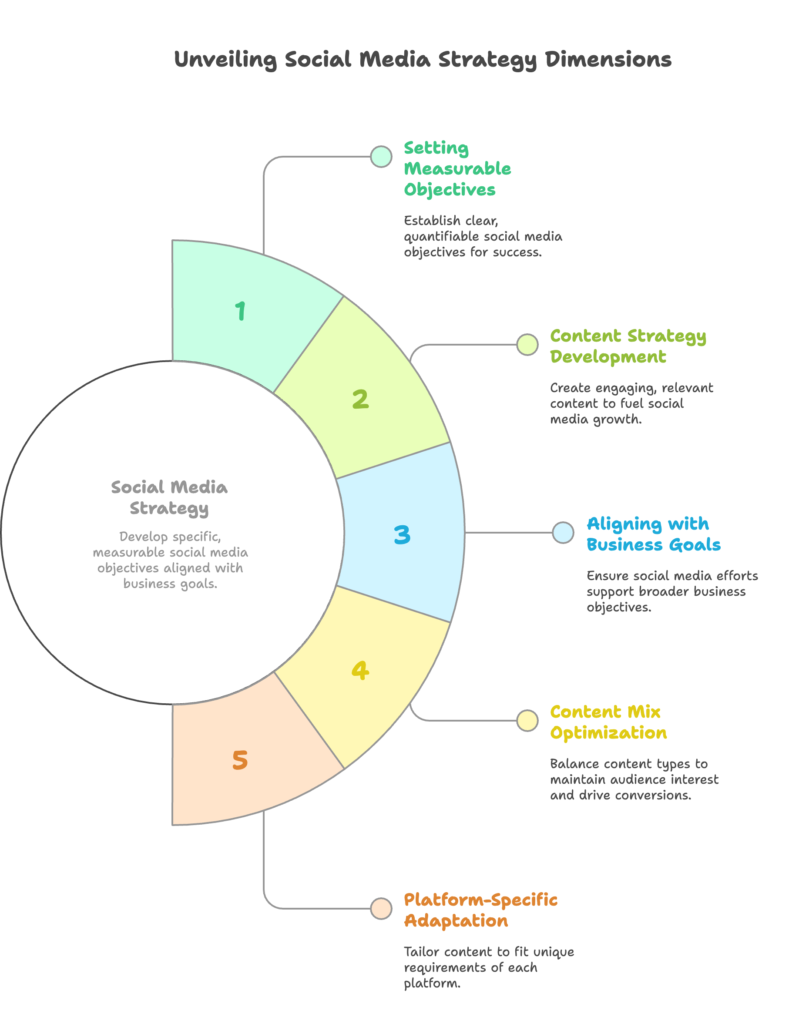
Defining Clear Goals
Effective social media goals include:
- Brand awareness metrics – “Increase Instagram follower count by 5,000 in Q3”
- Engagement benchmarks – “Achieve 3% engagement rate on TikTok content”
- Conversion and sales targets – “Generate 10K new customers in Q3 and Q4 from Instagram”
Note the specificity in these examples. They include numbers, timeframes, and platforms, making it clear what success looks like. This specificity transforms social media from a fuzzy “nice-to-have” into a measurable marketing channel.
Aligning Social Media Goals with Overall Business Objectives
Your social media strategy shouldn’t exist in isolation. Connect it directly to broader business goals:
- Supporting product launches – Use countdown content and influencer reveals
- Entering new markets – Target content to specific geographic or demographic segments
- Increasing average order value – Showcase product bundles and premium offerings
This alignment ensures your social efforts contribute meaningfully to business growth rather than just accumulating likes and comments. Every post, story, and campaign should serve a specific business purpose.
Content Strategy Development
Content is the fuel that powers your social media engine. Without a consistent stream of engaging, relevant content, even the best-planned strategy will sputter and stall.
Content Mix Optimization
No single type of content will sustain audience interest. Instead, create a balanced mix:
- Educational content (30%) – Tutorials, how-tos, and buying guides that establish expertise
- Promotional content (30%) – Product features, sales announcements, and special offers
- Entertainment content (30%) – Behind-the-scenes glimpses, lifestyle content, and trendy formats
- User-generated content (10%) – Customer photos, testimonials, and reviews
This balanced approach prevents “selling fatigue” while still driving conversions. Too many promotional posts will drive away followers, while too much entertainment content may fail to convert interest into sales.
For example, a skincare brand might post Monday tutorials on application techniques, Wednesday product spotlights, Friday behind-the-scenes content, and weekend reposts of customer results.
Platform-Specific Content Adaptation
The cardinal sin of social media marketing is cross-posting identical content across all platforms. Each platform has unique requirements:
- Format requirements – Vertical video for TikTok and Reels, square images for Instagram feed
- Tone and style adjustments – More casual and trendy for TikTok, more professional for LinkedIn
- Posting frequency – Daily for Instagram, 3-5 times weekly for Facebook, 1-2 times daily for TikTok
This doesn’t mean creating entirely different content for each platform. Instead, adapt core content themes to fit each platform’s unique environment. A product demonstration might become a 15-second TikTok, a detailed YouTube tutorial, and a series of Instagram story slides.
Social Commerce Implementation
The final piece of your strategy is turning social engagement into sales through proper integration with your Shopify store.
Setting Up Shopify Social Integrations
Shopify offers native integrations with major social platforms that simplify the selling process:
- Product tagging capabilities – Connect your product catalog to enable tagging in posts
- Buy buttons and checkout processes – Enable in-platform purchasing
- Inventory synchronization – Automatically update product availability across platforms
These integrations create a seamless path from discovery to purchase. Rather than hoping a customer remembers your product and visits your store later, you can capture interest in the moment it occurs.
Setting up these integrations might seem technical, but Shopify has simplified the process through its app store and admin panel. Most connections require only a few clicks and basic account verification.
Creating Seamless Shopping Experiences
Beyond technical integration, consider the customer journey from social platform to purchase completion:
- Reduce friction – Minimize clicks, form fields, and page loads between interest and purchase
- Optimize for mobile – Ensure checkout processes work flawlessly on small screens
- Maintain visual consistency – Use similar imagery and messaging across platforms and your store
Remember that each additional step in the purchase process creates an opportunity for abandonment. The closer you can bring the checkout to the initial point of interest, the higher your conversion rate will be.
Leveraging Influencer Marketing for Shopify Success
While organic social media creates a foundation, influencer marketing can supercharge your results by leveraging established audiences and trusted voices. But not all influencer partnerships are created equal – success requires understanding the ecosystem and developing strategic approaches.
Understanding the Influencer Ecosystem
The influencer landscape has evolved far beyond celebrity endorsements into a complex ecosystem of content creators with varying audiences, specialties, and engagement levels.
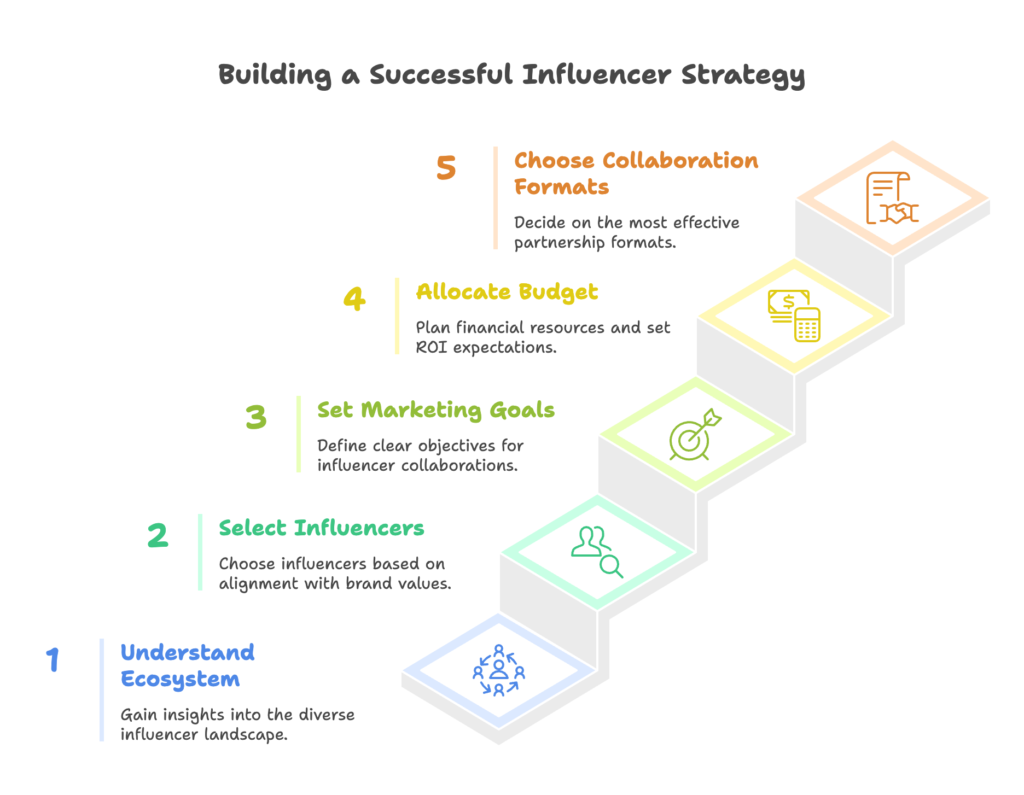
Types of Influencers and Their Roles
Different categories of influencers serve different marketing objectives:
- Mega-influencers (1M+ followers) – Provide massive reach but often with lower engagement and higher costs
- Micro-influencers (10K-100K followers) – Offer higher engagement rates and more targeted audiences
- Nano-influencers (1K-10K followers) – Deliver the highest engagement and most authentic connections
- Industry experts – Bring credibility and authority to technical or specialized products
Contrary to common assumption, bigger isn’t always better. A study by Markerly found that influencers with 10K-100K followers deliver the best combination of reach and engagement. For many Shopify stores, a network of micro-influencers can outperform a single celebrity partnership at a fraction of the cost.
Influencer Selection Criteria
Looking beyond follower counts is essential for successful partnerships:
- Audience alignment – Does their audience match your target customer demographics?
- Engagement quality – Are comments substantive or superficial?
- Content aesthetic – Does their visual style complement your brand?
- Values alignment – Do they represent principles compatible with your brand?
This evaluation requires looking beyond surface metrics. Dive into their content, read comment sections, and assess how they interact with followers. The most successful partnerships emerge when there’s authentic alignment between influencer, audience, and brand.
For example, a sustainable clothing brand would be better served by partnering with a smaller environmental activist than a fashion mega-influencer who posts about fast fashion brands.
Building an Effective Influencer Strategy
Random influencer partnerships rarely deliver consistent results. Instead, approach influencer marketing with the same strategic rigor you’d apply to any marketing channel.
Setting Specific Influencer Marketing Goals
Define what you want to achieve through influencer collaborations:
- Brand awareness – Expanding reach to new potential customers
- Content generation – Creating authentic product demonstrations and reviews
- Sales and conversions – Driving direct revenue through affiliate links or discount codes
- SEO and social proof – Generating reviews and mentions that boost credibility
These objectives will determine which influencers you partner with and what type of content you request. A brand awareness campaign might focus on reach, while a conversion campaign would prioritize engagement and call-to-action effectiveness.
Budget Allocation and ROI Expectations
Influencer compensation models vary widely:
- Flat fee payments – One-time payment for specific deliverables
- Commission/affiliate models – Percentage of sales generated through tracking links
- Product exchange – Free products in exchange for content (most common with smaller influencers)
- Hybrid models – Combining base payment with performance incentives
Each model aligns incentives differently. Flat fees provide certainty but don’t necessarily incentivize results. Commission models create performance motivation but may not work for influencers who need upfront compensation.
As for ROI, set realistic expectations based on campaign objectives. Awareness campaigns should measure cost per impression or engagement, while conversion campaigns should track cost per acquisition. Industry benchmarks suggest successful influencer campaigns should deliver at least a 5:1 return on investment for direct response goals.
Influencer Collaboration Formats for Shopify Stores
The format of your influencer collaborations should align with your products, audience, and marketing objectives.
Product Reviews and Demonstrations
Perhaps the most straightforward format, product reviews establish credibility through third-party validation:
- Honest evaluations – Authentic impressions build trust (even minor critiques can enhance credibility)
- Feature highlights – Expert explanation of product benefits and unique selling points
- Use cases – Demonstration of the product solving real problems
The key to effective reviews is authenticity. Overly scripted or exclusively positive reviews often perform worse than balanced assessments that acknowledge both strengths and limitations.
For example, a kitchenware brand might partner with cooking influencers to show their knives in action, highlighting durability and ergonomics while honestly discussing maintenance requirements.
Contests and Giveaways
Contests rapidly expand reach while generating excitement around your products:
- Entry mechanics – Following, tagging, sharing, or user-generated content creation
- Prize selection – Product bundles or exclusive experiences
- Winner selection – Random drawing or merit-based judging
The most effective contests combine multiple engagement actions (e.g., “Follow both accounts, tag two friends, and share why you want to win”) while remaining simple enough for mass participation.
Contests work particularly well for products with visual appeal or aspirational qualities. A beauty brand might run a “Show your best look” contest with hashtag entries, while a fitness equipment company could sponsor a transformation challenge.
Unboxing Experiences
Unboxing videos satisfy curiosity and create anticipation:
- Packaging showcase – Highlighting thoughtful design and presentation
- First impressions – Capturing authentic reactions to the product
- Setup process – Demonstrating how easily the product can be used
These videos work by triggering what psychologists call “vicarious consumption” – the pleasure of experiencing a purchase through someone else. They’re particularly effective for products with premium packaging or surprising features.
To maximize impact, send influencers the complete customer experience, including packaging, inserts, and any bonus items a typical customer would receive.
Live Sessions and Interviews
Live formats create urgency and interaction:
- Q&A sessions – Answering viewer questions about the product
- Behind-the-scenes looks – Showing product development or company culture
- Live demonstrations – Real-time showcases of product functionality
The interactive nature of live content builds deeper connections than pre-recorded videos. Viewers can ask specific questions and receive immediate answers, addressing their individual concerns.
Live sessions also create FOMO (fear of missing out), especially when combined with limited-time offers exclusive to viewers. A skincare brand might host a live session where an influencer demonstrates a routine while offering a 24-hour discount code.
Implementing and Managing Influencer Campaigns on Shopify
With strategy and formats defined, successful execution requires finding the right partners, managing campaigns effectively, and leveraging Shopify-specific tools.
Finding and Vetting the Right Influencers
The influencer selection process can make or break your campaign. Thorough research prevents partnerships that damage your brand or waste resources.
Research and Discovery Methods
Multiple approaches can identify potential influencers:
- Platform searches – Using relevant hashtags and keywords in each platform’s search function
- Influencer marketplaces – Platforms like AspireIQ, Grin, or Upfluence that connect brands with creators
- Competitor analysis – Identifying influencers already promoting similar products
- Customer mining – Finding influential customers already using your products
Each method has advantages. Platform searches find creators genuinely interested in your niche, while marketplaces offer efficiency and filtering tools. Competitor analysis reveals proven performers in your category, and customer mining identifies authentic advocates.
For example, a pet supply Shopify store might search Instagram for #doglovers, examine which influencers post about competing brands, and check if any existing customers have significant followings.
Evaluation Process
Once you’ve identified potential partners, thorough vetting prevents costly mistakes:
- Content quality assessment – Review posts for professionalism and alignment with your brand aesthetic
- Audience authenticity – Check for signs of purchased followers (like disproportionate follower counts to engagement)
- Previous sponsorships – Evaluate how they’ve handled other brand partnerships
- Values alignment – Ensure past content doesn’t contradict your brand values
This evaluation requires going beyond surface metrics. Scroll back months in their feed, read comment sections, and assess how they interact with their audience. Tools like HypeAuditor or Social Blade can help identify suspicious growth patterns that suggest fake followers.
Remember that every influencer becomes an extension of your brand. A single problematic partnership can undo years of brand building.
Campaign Management and Optimization
Clear communication and careful tracking transform good influencer relationships into great ones.
Briefing and Creative Direction
Provide guidance without stifling authenticity:
- Campaign objectives – Clearly communicate what you hope to achieve
- Key messages – Outline specific product benefits to highlight
- Do’s and don’ts – Establish boundaries while leaving room for creativity
- Visual guidelines – Share brand colors, aesthetics, and examples of preferred content
The most effective briefs balance structure with creative freedom. Too many restrictions produce inauthentic content, while too little guidance risks off-brand messaging.
For example, rather than scripting exact dialogue, provide key points to cover and examples of tone. Instead of dictating specific visuals, share a mood board illustrating your brand aesthetic.
Performance Tracking
Measure results to optimize future campaigns:
- Unique tracking links – Create UTM parameters for each influencer
- Custom discount codes – Assign individual promo codes to track conversions
- Engagement metrics – Monitor likes, comments, shares, and saves
- Conversion data – Track clicks, page visits, add-to-carts, and purchases
This tracking serves two purposes: evaluating campaign performance and identifying your highest-performing influencers for continued partnership.
Be sure to look beyond immediate sales. Some influencers excel at generating immediate conversions, while others build awareness that converts over longer periods. Both have value depending on your objectives.
Leveraging Shopify-Specific Tools
Shopify offers specialized tools that simplify influencer management and maximize results.
Shopify Collabs Platform
This native Shopify tool streamlines influencer marketing:
- Influencer discovery – Find creators already using or interested in your products
- Campaign management – Create, assign, and track campaign tasks
- Performance analytics – Measure results across multiple influencers
- Affiliate commission processing – Automatically calculate and pay commission-based compensation
Shopify Collabs integrates directly with your store, eliminating the need for third-party platforms in many cases. This integration provides more accurate tracking and simpler management.
For example, a clothing brand could use Shopify Collabs to recruit fashion influencers, assign specific products for promotion, track resulting sales, and automatically pay commissions—all within a single platform.
Third-Party Apps for Influencer Management
For more advanced needs, the Shopify App Store offers specialized solutions:
- Refersion – Advanced affiliate and influencer tracking
- Grin – End-to-end influencer relationship management
- Dovetale – Influencer discovery and campaign management
- Upfluence – Influencer search and analytics platform
These apps provide more sophisticated features than native tools, such as automated outreach, content approval workflows, and detailed analytics dashboards. They’re particularly valuable for stores running large-scale influencer programs.
When selecting an app, consider your specific needs and budget. Some offer free plans with basic functionality, while others require monthly subscriptions for full feature access.
Measuring and Optimizing Social Media and Influencer Performance
Without measurement, you’re flying blind. Effective analytics turn social media and influencer marketing from creative guesswork into data-driven strategies with predictable results.
Key Performance Indicators (KPIs)
Different objectives require different success metrics. Align your KPIs with your specific goals.
Awareness and Engagement Metrics
For top-of-funnel objectives, track:
- Reach – Total number of unique users who saw your content
- Impressions – Total number of times your content was displayed
- Engagement rate – Percentage of viewers who interacted with content
- Follower growth – Net increase in followers attributable to campaigns
These metrics indicate how effectively you’re building audience and interest. While they don’t directly measure revenue, they’re essential leading indicators for brand growth.
Pay particular attention to engagement rate (interactions divided by reach), as it reveals content resonance better than raw numbers. A post reaching 100,000 people with 1,000 engagements (1% rate) may be less effective than one reaching 10,000 with 500 engagements (5% rate).
Conversion and Revenue Metrics
For bottom-of-funnel objectives, measure:
- Click-through rate (CTR) – Percentage of viewers who clicked on links
- Conversion rate – Percentage of visitors who completed desired actions
- Average order value (AOV) – Typical purchase amount from social traffic
- Return on ad spend (ROAS) – Revenue generated per dollar spent
- Customer acquisition cost (CAC) – Total expense to acquire one customer
These metrics directly connect social efforts to business results. They help identify which platforms, content types, and influencers deliver the best return on investment.
For example, if Instagram drives higher traffic but TikTok produces better conversion rates, you might adjust your strategy to use Instagram for awareness and TikTok for direct response campaigns.
Attribution and Analysis
Understanding which touchpoints influence purchases allows for more accurate assessment and optimization.
Multi-Touch Attribution Models
Different models assign value to marketing touchpoints in various ways:
- First-click attribution – Gives full credit to the first touchpoint
- Last-click attribution – Gives full credit to the final touchpoint before purchase
- Linear attribution – Distributes credit equally across all touchpoints
- Time-decay attribution – Gives more credit to touchpoints closer to conversion
No model is perfect, but understanding the customer journey helps select the most appropriate one. For products with short consideration cycles, last-click may be sufficient. For complex purchases, multi-touch models provide more accurate insights.
Shopify’s native analytics offer basic attribution, while Google Analytics provides more sophisticated options. For the most comprehensive view, consider dedicated attribution tools like Wicked Reports or Triple Whale.
A/B Testing Framework
Systematic testing improves performance over time:
- Creative testing – Compare different visual styles, copy approaches, or content formats
- Influencer comparison – Evaluate different types of influencers with similar products
- Call-to-action testing – Try variations in offer presentation and language
- Timing experiments – Test posting schedules and frequency
Effective testing requires isolating variables. Change one element at a time while keeping others constant to identify what truly affects performance.
For example, have the same influencer promote the same product with different calls to action, or have different influencers promote the same product with identical calls to action. This methodical approach reveals causal relationships rather than coincidental ones.
Continuous Improvement Strategy
Social media and influencer marketing aren’t “set it and forget it” channels. They require ongoing refinement based on performance data.
Data-Driven Optimization
Regular analysis informs strategic adjustments:
- Content performance review – Identify which formats, topics, and styles generate best results
- Platform effectiveness evaluation – Compare ROI across different social networks
- Influencer assessment – Rank partners by both engagement and conversion metrics
- Audience insights analysis – Study demographic and behavioral data for targeting refinement
Establish a regular review cycle—weekly for campaign-level metrics, monthly for platform performance, and quarterly for overall strategy assessment.
Use these insights to continually refine your approach. If short-form video consistently outperforms static images, shift resources accordingly. If certain product categories perform better with specific influencer types, prioritize those partnerships.
Scaling Successful Approaches
Once you identify winning strategies, amplify them:
- Budget reallocation – Shift spending toward high-performing channels and tactics
- Relationship deepening – Convert successful one-off influencer collaborations into ongoing partnerships
- Content repurposing – Adapt top-performing organic content for paid promotion
- Template creation – Develop frameworks based on successful campaigns for consistent replication
Scaling isn’t just about spending more—it’s about systematic multiplication of proven approaches. Document what works in playbooks that can be repeated and refined over time.
For instance, if unboxing videos from micro-influencers consistently drive sales, develop a streamlined process for identifying, vetting, and onboarding more such partners with similar audience demographics.
Future Trends and Advanced Strategies
The social commerce landscape continues to evolve rapidly. Staying ahead of trends positions your Shopify store for future success.
Emerging Social Commerce Innovations
New technologies are transforming how consumers discover and purchase products on social platforms.
Live Shopping Integration
Already dominant in Asian markets, live shopping is gaining traction globally:
- Real-time purchasing – Allowing viewers to buy products during live streams
- Interactive elements – Q&A, polls, and gamification driving engagement
- Limited-time offers – Creating urgency during broadcast events
Platforms like Instagram, TikTok, and YouTube are expanding live shopping capabilities, creating new opportunities for Shopify merchants. These formats combine the immediacy of live interaction with the convenience of one-click purchasing.
Early adopters of live shopping often see conversion rates 10 times higher than traditional e-commerce, as the format combines entertainment, education, and shopping in a single engaging experience.
Augmented Reality and Virtual Try-Ons
AR features reduce purchase hesitation by allowing virtual product testing:
- Virtual try-on – For fashion, accessories, and cosmetics
- Placement visualization – For furniture and home décor
- Size comparison – For understanding product dimensions
Shopify’s AR capabilities integrate with social platforms, allowing customers to visualize products in their own environments before purchasing. This technology is particularly valuable for products where fit, size, or appearance are key purchase considerations.
For example, a furniture store might create Instagram ads that let users visualize a sofa in their living room, while a beauty brand could offer virtual makeup try-on through TikTok filters.
Advanced Influencer Collaboration Models
Beyond basic partnerships, innovative collaboration models create deeper connections and more sustainable results.
Long-Term Brand Ambassadorships
Moving from transactional to relationship-based partnerships:
- Exclusive representations – Influencers becoming the face of your brand
- Product co-creation – Collaborating on limited-edition or signature items
- Content series development – Creating ongoing narratives rather than one-off posts
These deeper partnerships build stronger brand associations and more authentic advocacy. When an influencer consistently represents your brand over months or years, their audience develops stronger trust in your products.
For example, a fitness equipment Shopify store might partner with trainers to develop signature workout series using their products, while a cosmetics brand might collaborate with beauty influencers on limited-edition collections.
Influencer-Generated Content Repurposing
Maximizing the value of influencer content beyond its initial posting:
- Paid amplification – Boosting high-performing organic influencer content
- Website integration – Featuring influencer content on product pages
- Email marketing inclusion – Adding influencer testimonials to customer communications
- Ad creative development – Converting influencer content into advertising assets
This approach extends content lifespan and reaches audiences beyond the influencer’s followers. It also provides authentic creative assets at a fraction of traditional production costs.
Many brands now negotiate usage rights as part of influencer contracts, allowing them to repurpose content across multiple channels. This strategy is particularly effective for brands with limited creative resources or those seeking to rapidly test different messaging approaches.
References
- Business Insider. (2024, August 23). Why Social Media Influencers Are Important to E-Commerce: Shopify. https://www.businessinsider.com/why-social-media-influencers-are-important-to-e-commerce-shopify-2024-8
- Kynship. (2022, July 27). Influencer Marketing for Shopify Merchants: A Foolproof Guide. https://www.kynship.co/blog/influencer-marketing-for-shopify-merchants-a-foolproof-guide
- True North Social. (2024, December 26). Boost Your E-Commerce Success with Shopify Social Media Integration. https://truenorthsocial.com/blog/boost-your-e-commerce-success-with-shopify-social-media-integration/
- IdentixWeb. (n.d.). How Influencer Marketing Can Boost Sales on Shopify. https://www.identixweb.com/how-influencer-marketing-can-boost-sales-on-shopify/
- Afluencer. (n.d.). Influencer Marketing for Shopify: 5 Things You Need to Know. https://afluencer.com/shopify-influencer-marketing-things-to-know/
- Praella. (2024, November 29). Essential Shopify Influencer Marketing Tips for E-Commerce Success. https://praella.com/blogs/shopify-insights/essential-shopify-influencer-marketing-tips-for-e-commerce-success
Ready to supercharge your Shopify store’s social media and influencer marketing? Growth Suite helps you run effective discount campaigns and collect valuable customer data through its AI-driven platform. The app’s smart campaign engine creates personalized, time-limited offers that boost conversions and increase revenue. With detailed analytics on visitor behavior and product performance, you’ll know exactly which strategies are working. Install Growth Suite for free and start transforming casual browsers into loyal customers with just one click!
